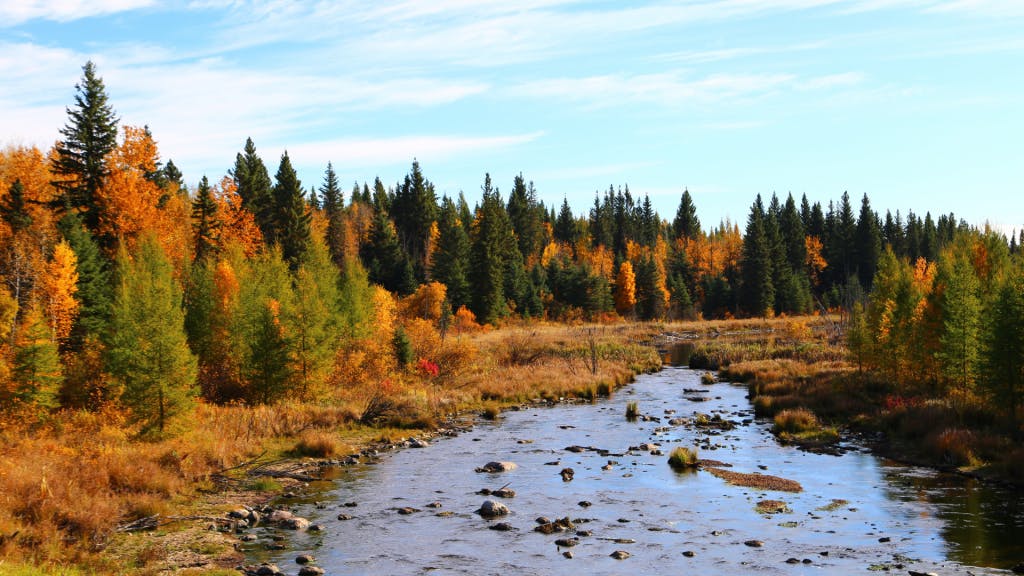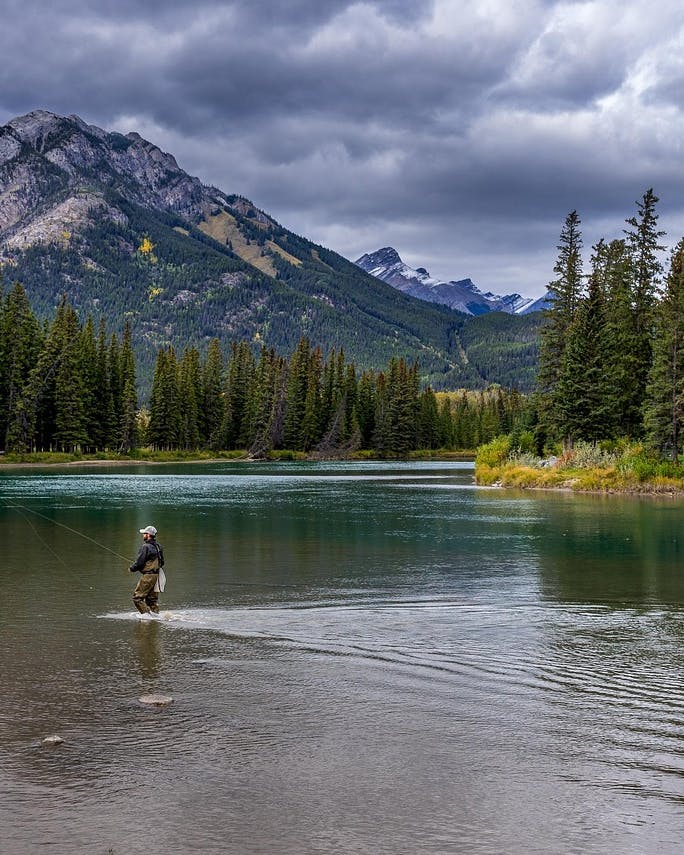The case for nature-based solutions in Alberta

Nature-based Solutions can be complex. Keep reading to get a better understanding of what they are, why they are important, and how you can apply them.
Climate change and biodiversity loss are the largest existential threats of our time.
Biodiversity is declining and we are losing habitat because of climate change. Fundamental transformations are needed to address these challenges.
Nature-based Solutions offer a path to address climate change and biodiversity loss. Plus, these solutions have social, economic, and environmental benefits.
Our team has been exploring Nature-based Solutions for some time. As we assess our work at Alberta Ecotrust Foundation, we're starting to see how Nature-based Solutions can play a larger role. It’s exciting to consider how we can potentially scale ecosystem or landscape solutions with multiple partners and ambitious objectives.
As we learn more, it is clear these solutions are complex. So, we wanted to start unpacking the complexity and make a case for them.
What are Nature-based Solutions?
Nature-based Solutions offer an approach to address the twin crises of climate change and biodiversity loss and have multiple co-benefits that address societal challenges, such as economic, environmental, or social benefits.
You might wonder, how are Nature-based Solutions different from the conservation work we’ve always done? Stephen Legault explains it well:
“Nature-based Solutions sound a lot like a convenient repackaging of familiar calls to protect nature, for our own sake and for the sake of the planet. What sets Nature-based Solutions apart, however, is the systematic approach that it demands and its multiple benefits for people, our economy, for Indigenous reconciliation, and for human well-being. These benefits include investments in local trades, creation of jobs, and educational opportunities.” - Stephen Legault, Highwatermark Strategy & Communications
And, to better understand Nature-based Solutions, the international scientific community has agreed upon four approaches:
1. Protection and protected areas.
Protecting ecosystems such as grasslands, boreal forests, wetlands, and peatlands.
2. Improved management of forests and agricultural lands.
Increasing the amount of carbon sequestered through forest management or agricultural practices.
3. Restoration.
Planting trees in cities and on deforested land, and restoring natural flows to wetlands, to increase carbon capture.
4. Natural infrastructure.
Increasing human, ecosystem, and infrastructure resilience from climate impacts by emulating nature.
So why are Nature-based Solutions important?
In 2021, Nature United published research demonstrating the value of using Nature-based Solutions to mitigate greenhouse gas emissions in Canada.
This landmark study examined four ecosystems and 24 Nature-based Solutions pathways. These pathways have the potential to cut Canada’s greenhouse gas emissions by an amount equal to 11% of our current annual emissions within the next decade.
The study also estimated the potential for each province.
In Alberta, Nature-based Solutions could reduce emissions by 3.8 megatonnes of carbon dioxide equivalent (MT CO2e) annually in 2030.
The largest opportunities for Alberta lie in climate-smart and economically efficient agricultural practices, followed by conserving and restoring grasslands, forests, and wetlands.
It is clear there are exciting opportunities for Nature-based Solutions here in Alberta, but these solutions are not a substitute for reducing emissions. We must continue to decarbonize our energy systems while also investing in Nature-based solutions.
Plus, Nature-based Solutions are cost-effective.
Nature United’s study also demonstrated that many Nature-based Solutions cost less than $50 per tonne to implement.
The price of carbon will continue to rise, signalled by the federal Liberal government to be $170 per tonne in 2030. So Nature-based Solutions are considerably less expensive, and these opportunities are available now.
Nature-based Solutions can create jobs and provide alternative revenue streams to farmers, ranchers, foresters, and Indigenous communities.
Reconciliation through Nature-based Solutions.
Supporting Indigenous-led Nature-based Solutions is also work Alberta Ecotrust needs to do to advance our action on Truth and Reconciliation. Recognizing and upholding the rights of Indigenous Peoples, incorporating Indigenous knowledge of fire and other ecosystem processes, and investing in the capacity of Indigenous Peoples to develop their own Nature-based Solutions on their territories are all vitally important. In partnership with Indigenous Peoples, we could mitigate climate change, protect biodiversity, and improve land stewardship.
Also, Nature-based Solutions are applicable everywhere.
Nature-based Solutions can be deployed broadly across the province and at different scales - in our urban areas, smaller communities, and larger landscapes. They easily fit within our communities and can tackle biodiversity loss and the climate crisis in cities, while improving urban quality of life.
Some opportunities include:
repurposing or rewilding grey infrastructure,
the creation of green corridors,
riparian restoration, and
“land-sparing interventions” such as shared use of existing spaces for working and living.
How can we apply Nature-based solutions?
We need to prioritize solutions that offer long-term results, that are available to us now, and that address climate change and biodiversity loss. Perfect may be the enemy of good here and we can’t afford to delay action while we wait on flawless solutions.
"The climate and biodiversity crises are time-bound where winning slowly is actually losing.” - Damien Hardie, Co-founder and Executive Director, Canadian Forests International.
So, we need to apply Nature-based Solutions using a broad approach that includes:
Federal and provincial regulations,
Policy incentives,
Market shifts,
Nature-based Solutions standards, and
Public and private investments.
Fundamental to Alberta Ecotrust Foundation’s work is that to unlock carbon reductions and preserve biodiversity, we need to ‘multisolve’ - address multiple wicked problems at once with diverse stakeholders while contributing to a just, equitable, and sustainable future.
We challenge like-minded organizations to also consider how you might evolve or rethink your current work through a Nature-based Solutions lens?
Or, can you link a project to address both the climate and biodiversity crises while also incorporating co-benefits such as improving climate resiliency, food security, Indigenous co-creation, or social equity?
We see significant benefits to this approach. We are thinking about how to further develop this work and weave Nature-based Solutions into our program refresh. To stay informed of this work, please subscribe to our email list.
Want to learn more about Nature-based Solutions? Check out these resources.
Foundational Natural Climate Solutions research
CPAWS Finding Common Ground. Six steps for tackling climate change and biodiversity loss in Canada
World Economic Forum BiodiverCities by 2030: Transforming cities’ relationship with nature
Stephen Legault’s opinion piece, Nature as a solution for what ails us
Nature-based Climate Solutions Summit’s comprehensive curated list with a focus on Canada
For more information please contact:
Lori Rissling Wynn, Program Specialist, Alberta Ecotrust Foundation
Related posts
Explore our most recent posts.



